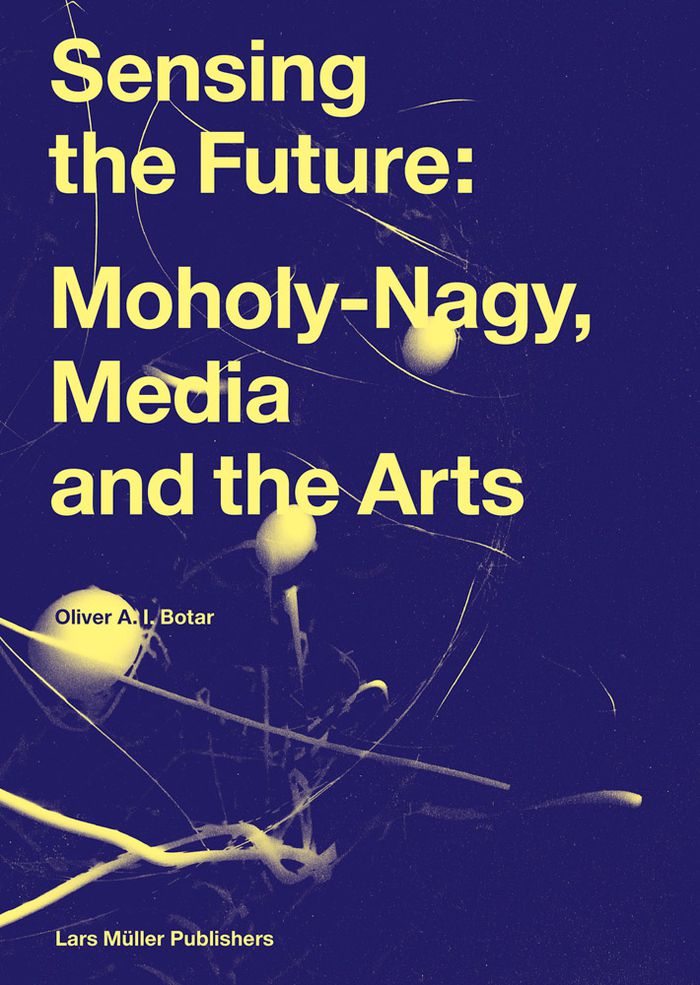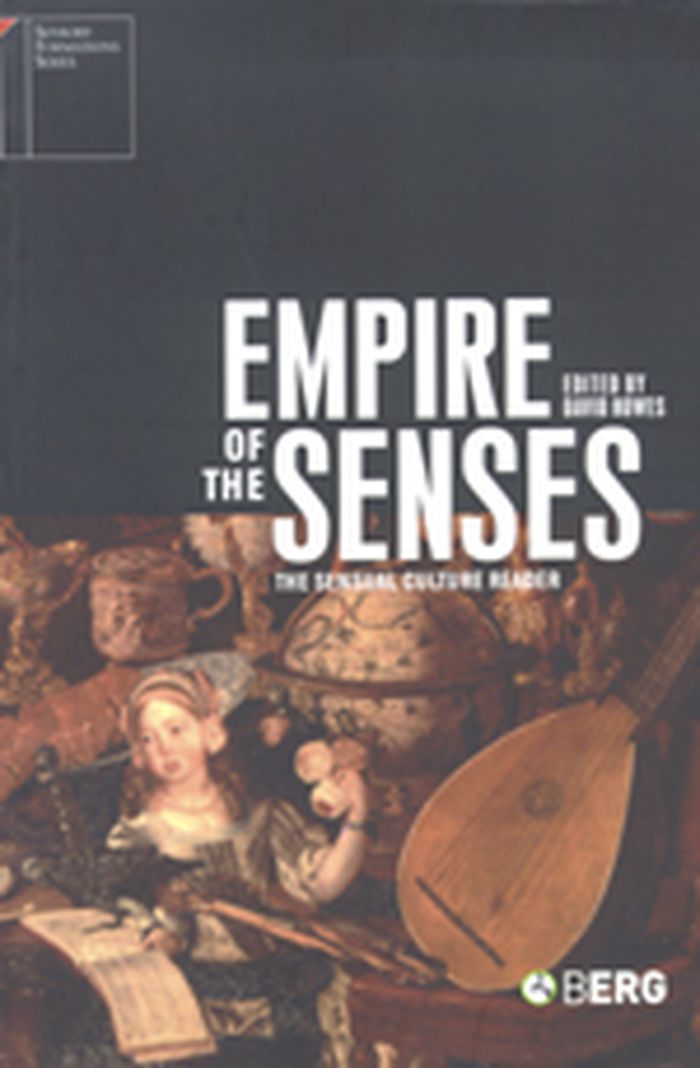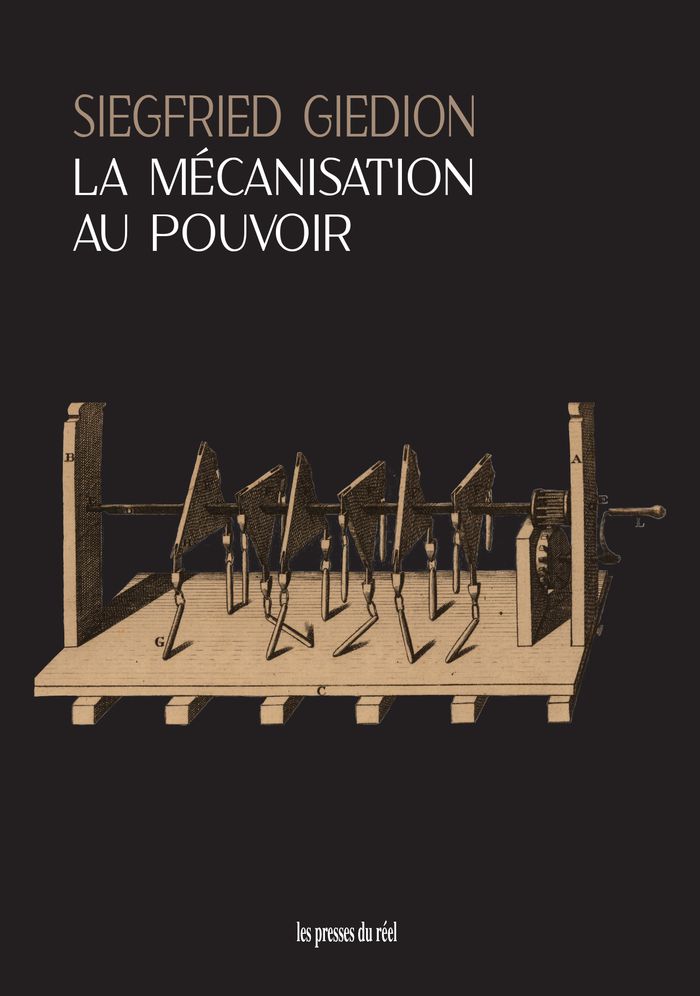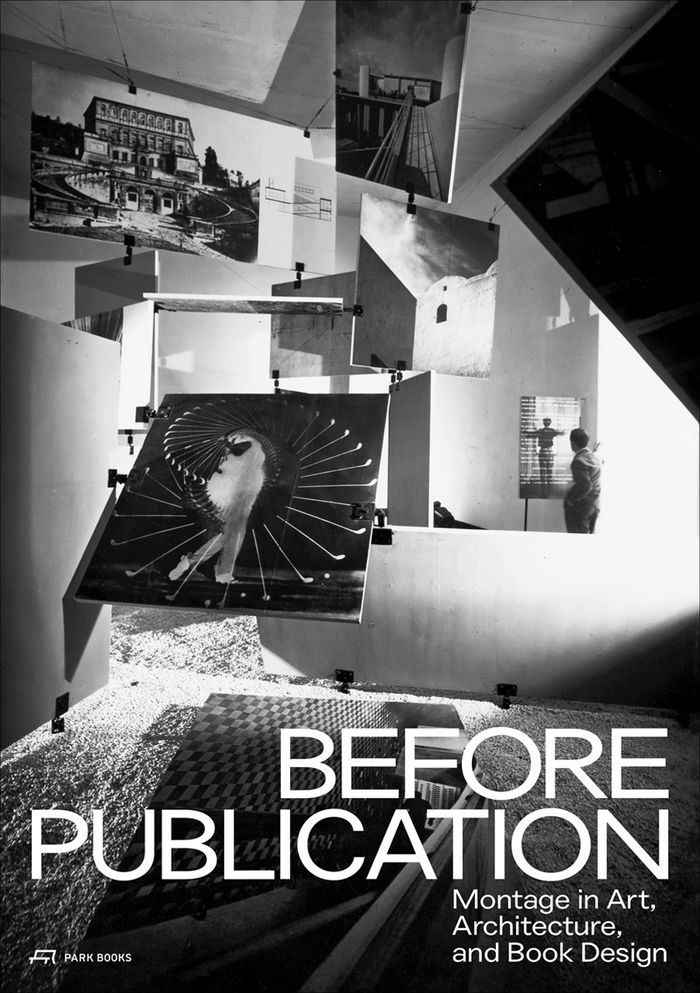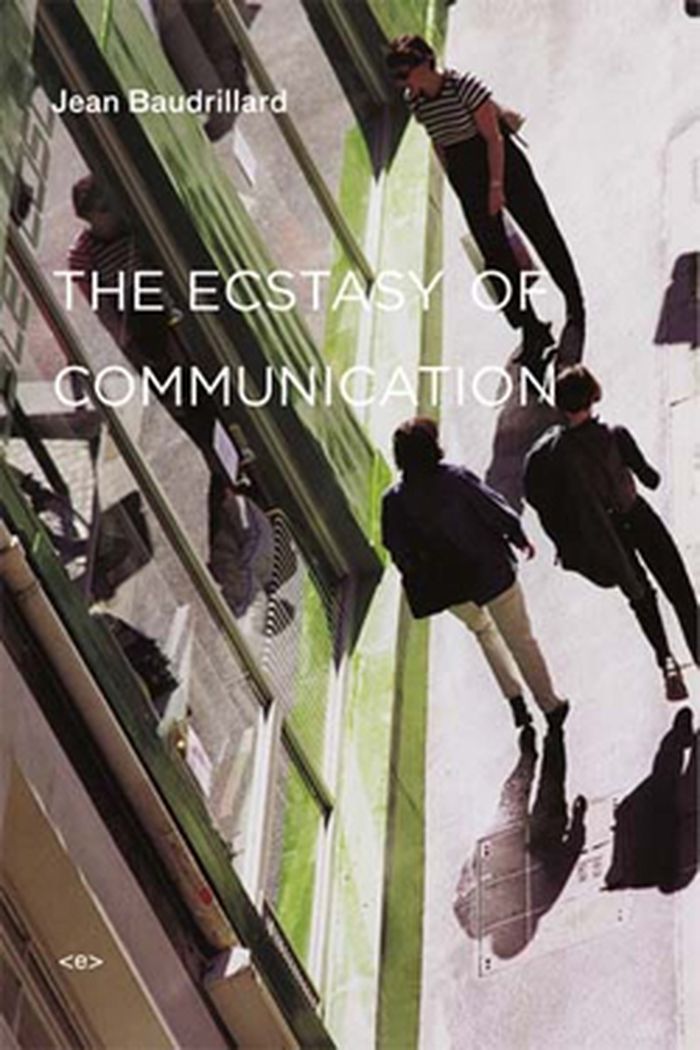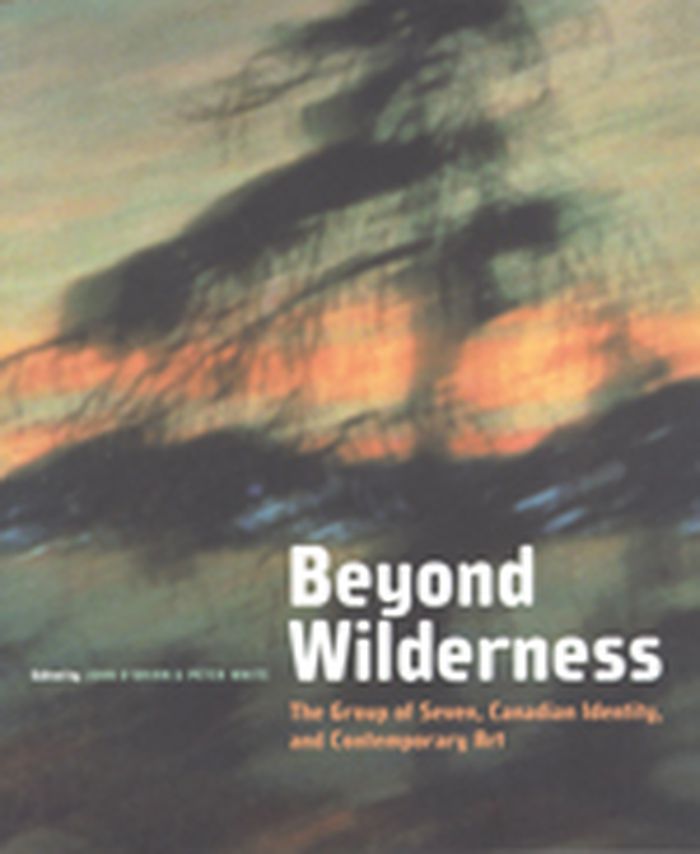$79.00
(available to order)
Summary:
Life in the digital economy of information and images enriches us but often induces a sense of being overwhelmed. ''Sensing the Future: Moholy-Nagy, Media and the Arts'' considers the impact of technology by exploring ways it was addressed in the practice of the Hungarian polymath artist László Moholy-Nagy (1895-1946), a prominent professor at the Bauhaus and a key figure(...)
Sensing the future: Moholy-Nagy, media and the arts.Revised edition
Actions:
Price:
$79.00
(available to order)
Summary:
Life in the digital economy of information and images enriches us but often induces a sense of being overwhelmed. ''Sensing the Future: Moholy-Nagy, Media and the Arts'' considers the impact of technology by exploring ways it was addressed in the practice of the Hungarian polymath artist László Moholy-Nagy (1895-1946), a prominent professor at the Bauhaus and a key figure in the history of Modernism. Moholy-Nagy felt that people needed guidance to cope with the onslaught of sensory input in an increasingly technologized, mediatized, hyper-stimulating environment. His ideas informed media theorists such as Walter Benjamin, John Cage, Sigfried Giedion, and Marshall McLuhan, who anticipated digital culture as it emerged. Should we then regard Moholy-Nagy as a pioneer of the digital? His aesthetic engagement with the technology/body problematic broached the notions of immersion, interactivity and bodily participation, innately offering a critique of today’s disembodiment.
Contemporary Art Monographs
$35.00
(available to order)
Summary:
In Empire of the Senses the senses are considered as cultural systems. Bringing together classic pieces by key thinkers--from Marshall McLuhan and Alain Corbin to Susan Stewart and Oliver Sacks--as well as newly commissioned articles, this path-breaking book provides a comprehensive overview of the "sensual revolution," where all manner of disciplines converge. Its aim is(...)
Empire of the Senses : The sensual culture reader
Actions:
Price:
$35.00
(available to order)
Summary:
In Empire of the Senses the senses are considered as cultural systems. Bringing together classic pieces by key thinkers--from Marshall McLuhan and Alain Corbin to Susan Stewart and Oliver Sacks--as well as newly commissioned articles, this path-breaking book provides a comprehensive overview of the "sensual revolution," where all manner of disciplines converge. Its aim is to enhance our understanding of the role of the senses in history and across cultures by overturning the hegemony of vision in contemporary theory and demonstrating that all senses play a role in mediating cultural experience. It asks provocative questions that most of us take for granted. Are there, for example, only five senses, or is this assumption a Western construct? This radical contribution to revisioning cultural studies will be essential reading for anyone hoping to understand the full complexity of how we experience our world.
Architectural Theory
$64.95
(available in store)
Summary:
Dans son étude magistrale de 1948, Sigfried Giedion propose d'ausculter la vie moderne à partir de ses objets les plus insignifiants. Les protagonistes de cette « histoire anonyme » sont des machines à pain, des moissonneuses-batteuses, des tapis roulants et des fauteuils de barbier. En s'intéressant ainsi moins à ses créateurs illustres qu'aux processus de(...)
La mécanisation au pouvoir : Une contribution à l'histoire anonyme
Actions:
Price:
$64.95
(available in store)
Summary:
Dans son étude magistrale de 1948, Sigfried Giedion propose d'ausculter la vie moderne à partir de ses objets les plus insignifiants. Les protagonistes de cette « histoire anonyme » sont des machines à pain, des moissonneuses-batteuses, des tapis roulants et des fauteuils de barbier. En s'intéressant ainsi moins à ses créateurs illustres qu'aux processus de standardisation et de mécanisation, Giedion prouve que la modernité est autant une affaire de singularité que de numéro de série. Référence incontournable pour l'histoire des techniques, la sociologie du quotidien, la théorie du design et l'étude des médias, « La mécanisation au pouvoir » est de ces livres dont on n'a toujours pas assimilé toutes les fulgurances. Epuisée depuis longtemps, cette édition nouvelle restitue enfin toute l'importance du montage visuel qui fascina tant de lecteurs de Giedion, de Walter Benjamin à Marshall McLuhan. Avec une préface d'Emmanuel Alloa et une postface d'Emanuele Quinz.
Critical Theory
$56.00
(available to order)
Summary:
At some point before publication, a book assumes its final form, the form in which it is experienced by its audience. Naturally, this audience is often oblivious to the many, sometimes complex, decisions involved in constructing visual meaning through the montage of different ideas and elements. But, although these deliberate decisions are not normally communicated to the(...)
Before publications: montage in art, architecture and book design. A reader.
Actions:
Price:
$56.00
(available to order)
Summary:
At some point before publication, a book assumes its final form, the form in which it is experienced by its audience. Naturally, this audience is often oblivious to the many, sometimes complex, decisions involved in constructing visual meaning through the montage of different ideas and elements. But, although these deliberate decisions are not normally communicated to the audience, the book is always to some extent a conception, or mediated presentation. The contributors to "Before Publication" consider the construction of visual meaning through montage, with each essay taking as its starting point a particular artifact—from Ed Ruscha’s photobook, Every Building on the Sunset Strip to works by Sergei Eisenstein, Muriel Cooper, and Marshall McLuhan to Tristan Tzara’s unpublished Dadaglobe anthology. A common theme threading throughout the chapters is the relationship between privacy and publicity. A concise introductory chapter by the book’s editors, Nanni Baltzer and Martino Stierli places the chapters in conversation and discusses the broader subject of montage in art, architecture, and book design.
Book Design
$75.00
(available to order)
Summary:
A room’s acoustic character seems at once the most technical and the most mystical of concerns. Since the early Enlightenment, European architects have systematically endeavored to represent and control the propagation of sound in large interior spaces. Their work has been informed by the science of sound but has also been entangled with debates on style, visualization(...)
Echo's chambers: architecture and the idea of acoustic space
Actions:
Price:
$75.00
(available to order)
Summary:
A room’s acoustic character seems at once the most technical and the most mystical of concerns. Since the early Enlightenment, European architects have systematically endeavored to represent and control the propagation of sound in large interior spaces. Their work has been informed by the science of sound but has also been entangled with debates on style, visualization techniques, performance practices, and the expansion of the listening public. Echo’s Chambers explores how architectural experimentation from the seventeenth through the mid-twentieth centuries laid the groundwork for concepts of acoustic space that are widely embraced in contemporary culture. It focuses on the role of echo and reverberation in the architecture of Pierre Patte, Claude-Nicolas Ledoux, Carl Ferdinand Langhans, and Le Corbusier, as well as the influential acoustic ideas of Athanasius Kircher, Richard Wagner, and Marshall McLuhan. Drawing on interdisciplinary theories of media and auditory culture, Joseph L. Clarke reveals how architecture has impacted the ways we continue to listen to, talk about, and creatively manipulate sound in the physical environment.
Architectural Theory
$39.95
(available to order)
Summary:
Architecture has a powerful role in nation building and identity formation. Buildings and monuments not only constitute the built fabric of society, they reflect the intersection of culture, politics, economics, and aesthetics as these forces are played out in distinct social settings and distinct times. This extraordinary anthology traces the interaction between(...)
Architecture and the Canadian fabric
Actions:
Price:
$39.95
(available to order)
Summary:
Architecture has a powerful role in nation building and identity formation. Buildings and monuments not only constitute the built fabric of society, they reflect the intersection of culture, politics, economics, and aesthetics as these forces are played out in distinct social settings and distinct times. This extraordinary anthology traces the interaction between culture and politics as reflected in Canadian architecture and the infrastructure of ordinary life, from the first contacts between indigenous peoples and European missionaries to the construction of big-box shopping centres in postmodern cities. Whether focusing on Jesuit perceptions of New France, the construction of Toronto’s St. James Cathedral or Canada’s first Parliament, Brutalism in Canadian architecture, or the ideas of Marshall McLuhan and Arthur Erickson, these essays showcase ways of thinking about the built environment that extend beyond considerations of authorship and style to address the influence of cultural politics and insights from race and gender studies and from postcolonial and spatial theory. By coupling a national focus with a wide historical scope, Architecture and the Canadian Fabric transforms how we see the role of architecture and in doing so radically questions how we continue to live in, interact with, and interpret the fabricated world.
Architecture in Canada
Whole earth field guide
$46.95
(available to order)
Summary:
The Whole Earth Catalog was a cultural touchstone of the 1960s and 1970s. Between 1968 and 1971, almost two million copies of its various editions were sold, and not just to commune-dwellers and hippies. Millions of mainstream readers turned to the Whole Earth Catalog for practical advice and intellectual stimulation, finding everything from a review of Buckminster Fuller(...)
October 2016
Whole earth field guide
Actions:
Price:
$46.95
(available to order)
Summary:
The Whole Earth Catalog was a cultural touchstone of the 1960s and 1970s. Between 1968 and 1971, almost two million copies of its various editions were sold, and not just to commune-dwellers and hippies. Millions of mainstream readers turned to the Whole Earth Catalog for practical advice and intellectual stimulation, finding everything from a review of Buckminster Fuller to recommendations for juicers. This book offers selections from eighty texts from the nearly 1,000 items of "suggested reading" in the Last Whole Earth Catalog. Illustrated and meticulously documented, this fascinating selection of texts cited as 'suggested reading' in the Whole Earth Catalog gives us a fresh, new look at this bible of a generation. Wonderful juxtapositions abound: Buckminster Fuller and Wendell Berry; Timothy Leary and Lao-Tzu; Thoreau and Marshall McLuhan; the Boston Women's Health Collective and Norbert Wiener; Nicholas Negroponte and Kakuzo Okakura; and Margaret Mead and James Baldwin (their A Rap on Race). At once libertarian and communitarian, practical and mystical, scientific and hands-on, Whole Earth Field Guide reveals the astonishing energy and spirit that motivated thousands of young people to challenge the status quo and to grapple, with remarkable prescience, with issues such as ecology and information technology that still confront us today.
$58.00
(available in store)
Summary:
From the 1960s onward, Allan Chasanoff (1936–2020) maintained a daily photographic practice, producing tens of thousands of images that pushed the limits of the medium and questioned its reliability as a document of reality. Preferring to experiment away from the art world, Chasanoff rarely exhibited his photographs, his art remaining unknown to all but a select circle of(...)
Seeing and not believing: The photography of Allan Chasanoff
Actions:
Price:
$58.00
(available in store)
Summary:
From the 1960s onward, Allan Chasanoff (1936–2020) maintained a daily photographic practice, producing tens of thousands of images that pushed the limits of the medium and questioned its reliability as a document of reality. Preferring to experiment away from the art world, Chasanoff rarely exhibited his photographs, his art remaining unknown to all but a select circle of friends and collaborators. This catalogue is the first to survey his beguiling work. Artist Mónika Sziládi, who worked as an archivist for Chasanoff, contributes an outline of Chasanoff’s life and practice, tracing the development of his art from his early experiments with light, shadow, and color in his lens-shot photographs to his late-career foray into 3D printing, which he viewed as the latest frontier of photography. Influenced by the ideas of Marshall McLuhan and Jacques Derrida, Chasanoff understood photographic images to be full of multivalent symbolism, and his art highlights the fluid nature of the medium. Using analog optical effects, such as blurring and other distortions, and on-screen tools to cut and layer digital images, Chasanoff created a wide range of pictures, some of which reference or appropriate the work of artists like Henri Matisse, Mark Rothko, or Giorgio Morandi. With nearly 200 plates organized into 7 thematic sections, ''Seeing and not believing'' brings Chasanoff’s contribution to postmodern photography to a wider audience and underlines how the artist’s work challenges our assumptions about believing what we see.
Photography monographs
The ecstasy of communication
$16.95
(available to order)
Summary:
First published in France in 1987, The Ecstasy of Communication was Baudrillard’s summarization of his work for a postdoctoral degree at the Sorbonne : a dense, poetically crystalline essay that boiled down two decades of radical, provocative theory into an aphoristically eloquent swan song to twentieth-century alienation. Baudrillard’s quixotic effort to be recognized by(...)
The ecstasy of communication
Actions:
Price:
$16.95
(available to order)
Summary:
First published in France in 1987, The Ecstasy of Communication was Baudrillard’s summarization of his work for a postdoctoral degree at the Sorbonne : a dense, poetically crystalline essay that boiled down two decades of radical, provocative theory into an aphoristically eloquent swan song to twentieth-century alienation. Baudrillard’s quixotic effort to be recognized by the French intellectual establishment may have been doomed to failure, but this text immediately became a pinnacle to his work, a mid-career assessment that looked both forward and back. By carefully distilling the most radical elements of his previous books, Baudrillard constructed the skeleton key to all of the work that was to come in the second half of his career, and set the scene for what he termed the “obscene”: a world in which alienation has been succeeded by ceaseless communication and information. The Ecstasy of Communication is a decisive, compact description of what it means to be “wired” in our braver-than-brave new world, where sexuality has been superseded by pornography, knowledge by information, hysteria by schizophrenia, subject by object, and violence by terror. The Ecstasy of Communication is an anti-manifesto that confronted and dispensed with such influences as Marshall McLuhan, Guy Debord, and Georges Bataille. It is an essential crib-book, lexicon, and companion piece to any and all of Baudrillard’s books. Twenty-five years after its original publication, it remains not only a prescient portrait of our contemporary condition, but also a dark mirror into which we have not yet dared to look.
Critical Theory
$49.95
(available to order)
Summary:
"The great purpose of landscape art is to make us at home in our own country" was the nationalist maxim motivating the Group of Seven's artistic project. The empty landscape paintings of the Group played a significant role in the nationalization of nature in Canada, particularly in the development of ideas about northernness, wilderness, and identity. In this book, John(...)
Architecture in Canada
September 2007, Montreal Kingston
Beyond wilderness : The group of seven, Canadian identity, and contemporary art
Actions:
Price:
$49.95
(available to order)
Summary:
"The great purpose of landscape art is to make us at home in our own country" was the nationalist maxim motivating the Group of Seven's artistic project. The empty landscape paintings of the Group played a significant role in the nationalization of nature in Canada, particularly in the development of ideas about northernness, wilderness, and identity. In this book, John O'Brian and Peter White pick up where the Group of Seven left off. They demonstrate that since the 1960s a growing body of both art and critical writing has looked "beyond wilderness" to re-imagine landscape in a world of vastly altered political, technological, and environmental circumstances. By emphasizing social relationships, changing identity politics, and issues of colonial power and dispossession contemporary artists have produced landscape art that explores what was absent in the work of their predecessors. Beyond Wilderness expands the public understanding of Canadian landscape representation, tracing debates about the place of landscape in Canadian art and the national imagination through the twentieth century to the present. Critical writings from both contemporary and historically significant curators, historians, feminists, media theorists, and cultural critics and exactingly reproduced artworks by contemporary and historical artists are brought together in productive dialogue. Beyond Wilderness explains why landscape art in Canada had to be reinvented, and what forms the reinvention took. Contributors include Benedict Anderson (Cornell), Grant Arnold (Vancouver Art Gallery). Rebecca Belmore, Jody Berland (York), Eleanor Bond (Concordia), Jonathan Bordo (Trent), Douglas Cole, Marlene Creates, Marcia Crosby (Malaspina), Greg Curnoe, Ann Davis (Nickle Arts Museum), Leslie Dawn (Lethbridge), Shawna Dempsey, Christos Dikeakos, Peter Doig, Rosemary Donegan (OCAD), Stan Douglas, Paterson Ewen, Robert Fones, Northrop Frye, Robert Fulford, General Idea, Rodney Graham, Reesa Greenberg, Gu Xiong (British Columbia), Cole Harris (British Columbia), Richard William Hill (Middlesex), Robert Houle, Andrew Hunter (Waterloo), Lynda Jessup (Queen's), Zacharias Kunuk (Igloolik Isuma Productions), Johanne Lamoureux (Montréal), Robert Linsley (Waterloo), Barry Lord (Lord Cultural Resources), Marshall McLuhan, Mike MacDonald, Liz Magor (ECIAD), Lorri Millan, Gerta Moray (Guelph), Roald Nasgaard (Florida State), N.E. Thing Company, Carol Payne (Carleton), Edward Poitras, Dennis Reid (Art Gallery of Ontario), Michel Saulnier, Nancy Shaw (Simon Fraser), Johanne Sloan (Concordia), Michael Snow, Robert Stacey, David Thauberger, Loretta Todd, Esther Trépanier (Québec), Dot Tuer (OCAD), Christopher Varley, Jeff Wall, Paul H. Walton (McMaster), Mel Watkins (Toronto), Scott Watson (British Columbia), Anne Whitelaw (Alberta), Joyce Wieland, Jin-me Yoon (Simon Fraser), Lawrence Paul Yuxweluptun, and Joyce Zemans (York).
Architecture in Canada
